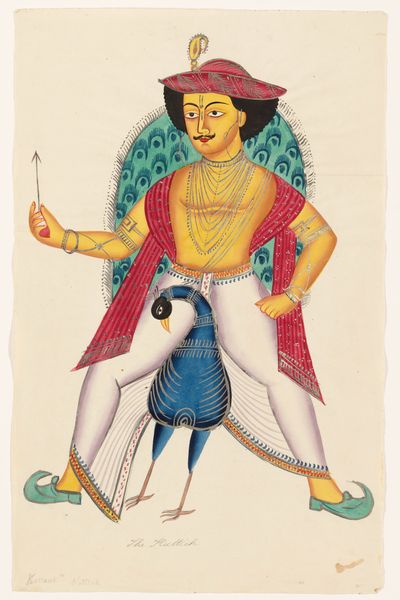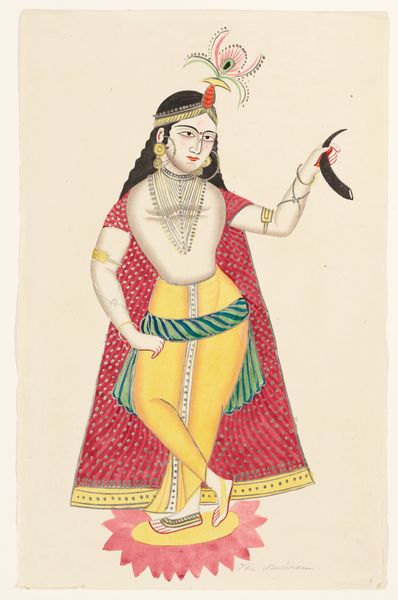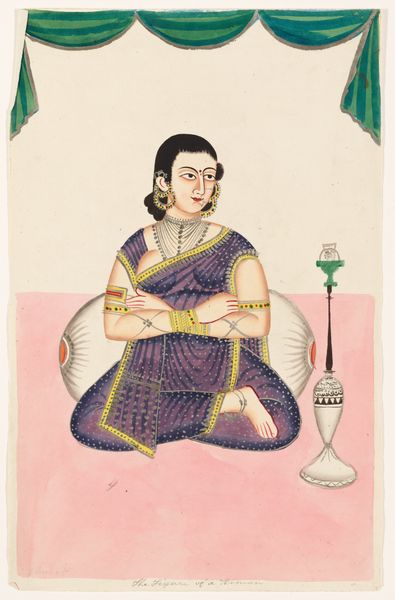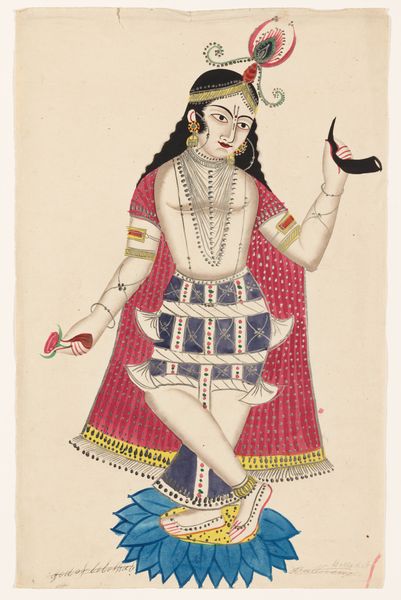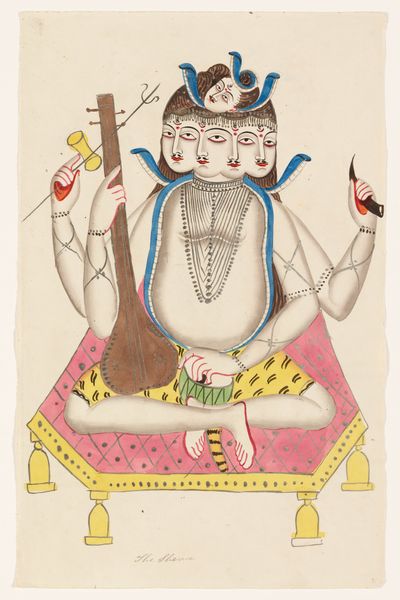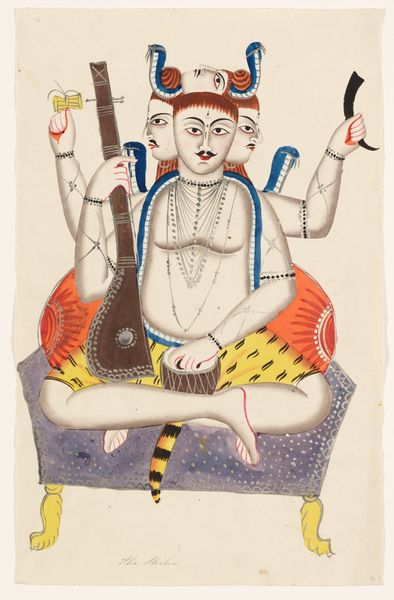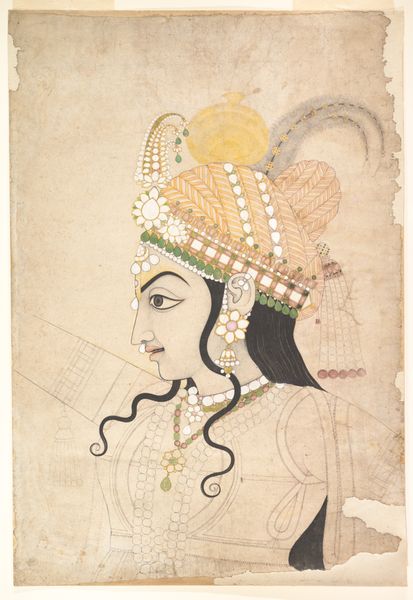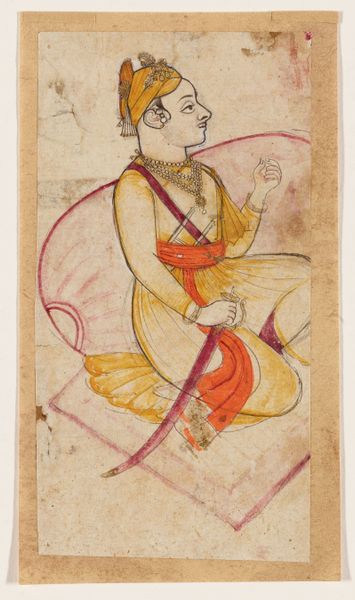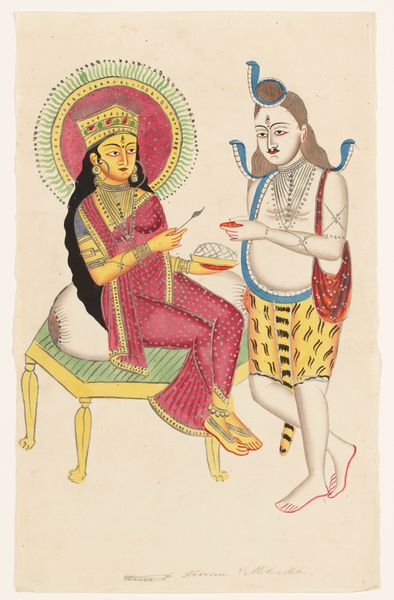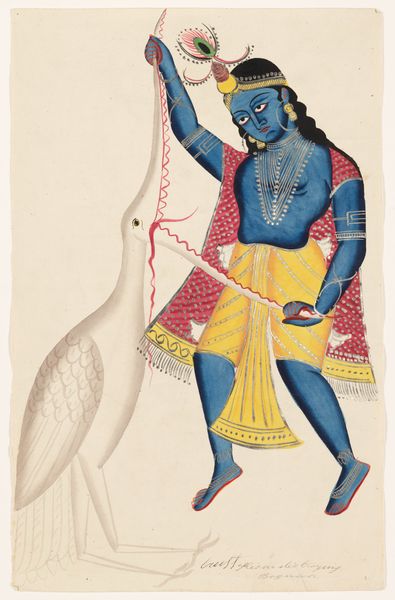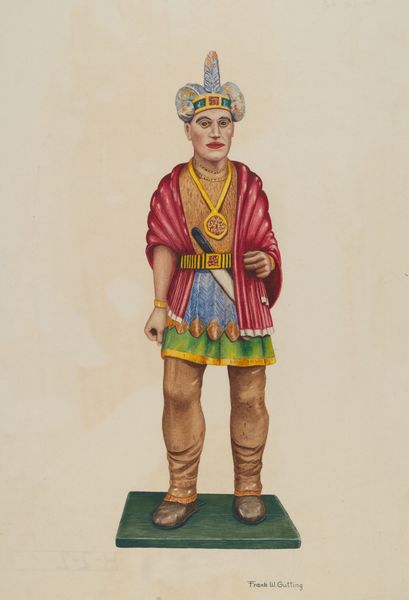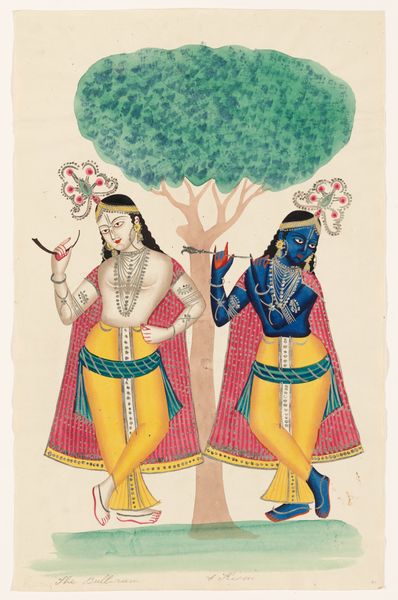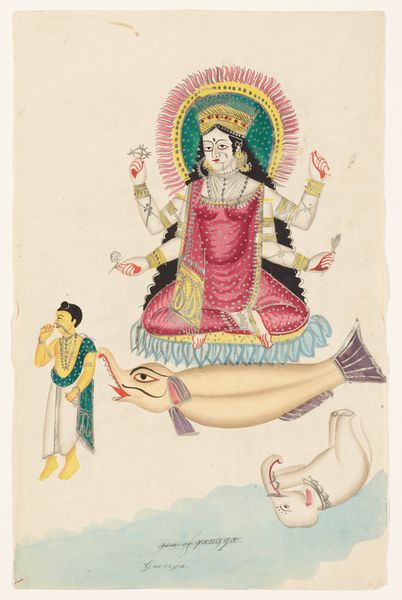
painting, watercolor
#
portrait
#
painting
#
asian-art
#
caricature
#
watercolor
#
orientalism
Dimensions: 17 11/16 x 11 1/8 in. (45 x 28.3 cm)
Copyright: Public Domain
Curator: Welcome! We are standing before “Holding a Hookah,” a 19th-century watercolor portrait from an unknown artist, currently residing here at the Minneapolis Institute of Art. What’s catching your eye first about this piece? Editor: Honestly, it’s the figure’s slightly vacant expression coupled with the... meticulous detail in the hookah. There's an odd disconnect that gives it a somewhat unsettling feeling, doesn't it? Curator: It is a curious combination. Consider, though, that such paintings served distinct roles in their time. Many were produced for European patrons as representations—often stereotypical—of South Asian life. They weren’t necessarily intended as “high art” but rather as ethnographic documentation, reflecting colonial power dynamics. Editor: So the unsettling feeling may be because it perpetuates an imbalance of power, creating a caricatured representation of the sitter. The bright colours are really enticing, while it depicts something which, due to it's social context, can feel offensive to a contemporary audience. Curator: Precisely. The artist probably sought to appeal to European tastes. We see that influence reflected in what art historians often term 'Orientalism'. The detailed rendering of the hookah contrasts with the figure’s somewhat flattened, almost cartoonish face. Editor: Which begs the question of the artist’s intentions. Were they subtly critiquing the sitter, or were they simply conforming to what their patrons expected? There’s also that tattoo. Was it symbolic, or is it used here simply as a design element, fitting to the orientalist vision? Curator: It's hard to say definitively without more context about its origins, though in similar art commissioned at the time it does often reflect popular or imagined notions more than accurate portrayals. Art, like all cultural production, can be a mirror reflecting power dynamics, sometimes unintentionally. Editor: That's the crux of the issue. These portraits served not just as depictions but as vehicles for reinforcing perceptions about class, culture and even political structures. When viewed critically, “Holding a Hookah" isn't merely an aesthetic object, but a loaded one. Curator: Yes, and by investigating its role within this history we come closer to unpacking that weight. Editor: Indeed. Now, when I look at "Holding a Hookah," it feels a bit more transparent, revealing both the sitter and the societal context in which this watercolor came to be.
Comments
minneapolisinstituteofart almost 2 years ago
⋮
The babu, or Indian bureaucrat, was a much parodied figure in the arts. His mannerisms and appearance reflected his engagement with the British world of fashion and etiquette as he climbed the social ladder away from the Indian middle class. Here, he is depicted as a dapper dandy smoking a hookah. He is draped in a chic waistcloth, shawl, sports heeled shoes, and a Prince Albert hairstyle.
Join the conversation
Join millions of artists and users on Artera today and experience the ultimate creative platform.
